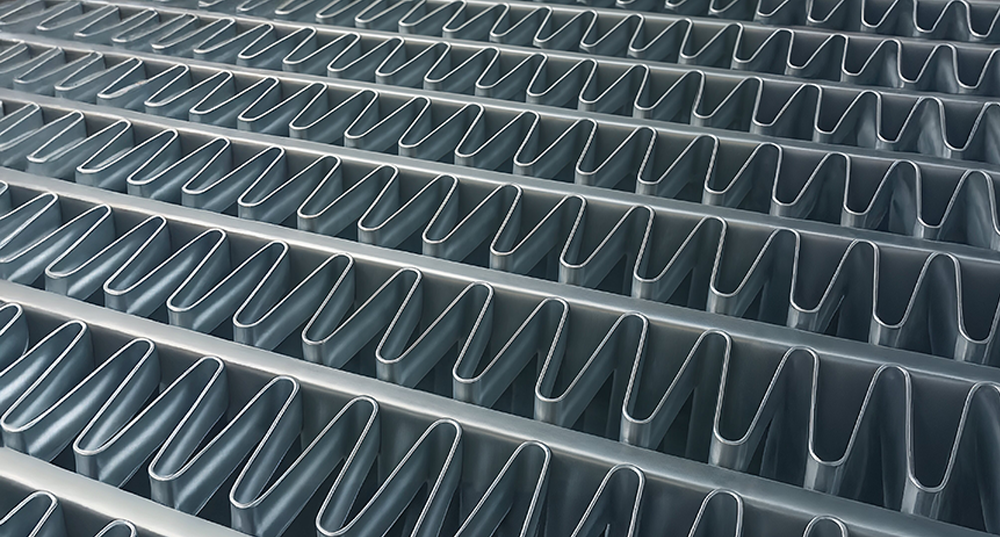Tube-to-Fin and Bar&Plate Aluminum Heat Exchangers
- Home
- Solutions & Technologies
- Tube-to-Fin and Bar&Plate

Tube-to-Fin and Bar&Plate Aluminum Heat Exchangers
Tube to Fin Heat Exchangers
Tube-and-fin heat exchangers consist of a series of tubes through which the working fluid flows, surrounded by thin aluminum fins that enhance heat transfer by increasing the surface area exposed to air. This type is commonly used in automotive radiators, HVAC systems, and light industrial applications.
Structure
- Good Airflow: Fins allow smooth airflow, ideal for applications with lower pressure drop requirements.
- Cost-effective: Cheaper to manufacture for high volume applications.
- Tubes: Round or oval tubes, typically arranged in a serpentine or straight pattern.
- Cost-effective: Cheaper to manufacture for high volume applications.
- Efficient for Moderate duty: Sufficient for applications where thermal loads and mechanical stress are not extreme.
Advantages
- Tubes: Round or oval tubes, typically arranged in a serpentine or straight pattern.
- Cost-effective: Cheaper to manufacture for high volume applications.
- Efficient for Moderate duty: Sufficient for applications where thermal loads and mechanical stress are not extreme.
- Good Airflow: Fins allow smooth airflow, ideal for applications with lower pressure drop requirements.
- Cost-effective: Cheaper to manufacture for high volume applications.
Bar & Plate Heat Exchangers
Bar‑and‑plate heat exchangers are constructed from stacked flat plates, air-side and inner fins and bars that form a robust network of flow passages for air, oil, or coolant. This technology creates flexibility, large heat transfer area, while the all‑aluminum brazed structure provides high strength and excellent thermal performance. This architecture offers superior resistance to vibration and thermal loads, making bar & plate heat exchangers the preferred choice for construction and mining equipment, military vehicles, and stationary industrial cooling systems. Their modular construction enables custom sizing and multi‑fluid configurations, and their thick walls allow for operation at high pressures and in harsh environments
Structure
- Construction Type: Built from stacked flat plates, interlaced with bars and fins to form a network of flow passages.
- Material: Entirely made of aluminum and brazed, creating a monolithic and highly durable unit.
- Plates: form alternating layers for hot and cold fluids.
- Inner fins: increase internal heat transfer surface area.
- Air-side fins: enhance external heat exchange.
- Modularity Can be custom-sized for specific dimensional and performance needs
- Wall Thickness: Thicker walls allow high-pressure operations.
- Assembly: Compact yet high-strength due to brazed architecture.
Advantages
- High Strength & Durability: Withstands vibration, shock, and thermal cycling ideal for off-road, military, and heavy industrial applications.
- Excellent Thermal Performance: Large internal surface area due to fine fins leads to high heat transfer efficiency.
- Pressure Handling: Suitable for high-pressure fluids thanks to reinforced structure.
- Environment Flexibility: Performs reliably in harsh conditions, including dust, debris, and temperature extremes.
- Design Versatility: Modular configuration enables custom heat transfer designs, including multi-fluid solutions.
- Compact Design: High performance in a small footprint, often outperforming tube-fin for space-constrained or rugged environments.
